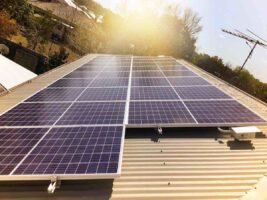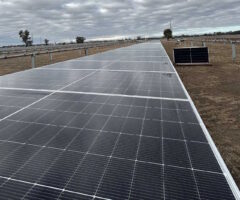The Australian Energy Market Commission (AEMC) has released a discussion paper as part of its Coordination of Generation and Transmission Investment Review (COGATI for short). The paper outlines the Commission’s proposed approach to transmission access reform.
Many people will be aware that the Commission had published a directions paper back in June. There has been extensive engagement with stakeholders: generators, network companies; investors; consumer groups; governments; and non-government organisations (NGOs). This engagement has been through submissions, workshops and general ongoing dialogue between the AEMC and our many stakeholders.
A consequence of this extensive engagement has been some important changes to the proposed model of reform, relative to the June directions paper.
Engagement is not just about going through the motions – it’s best done around the principles of transparency, inclusivity and responsiveness. Changes to the model in the latest COGATI report are a direct consequence of feedback provided by stakeholders in their submissions to the June paper.
At the outset, it is important to note that the nature of electricity generation is changing significantly. I’ve written about this in a personal capacity and the Commission has outlined this change succinctly through one of our five strategic priorities: the shift from a small number of large geographically concentrated generators to a large number of geographically dispersed small generators.
The way in which the transmission and generation components of the supply chain interact is of critical importance when thinking about required new investment, downward pressure on historically high wholesale prices, addressing climate change mitigation risks and the overall long-term interests of consumers. Making it easier to invest is a key underlying driver of the thinking behind processes such as COGATI.
The COGATI reforms have received significant media and analyst attention. As an example, one of the more prominent analysts, David Leitch, published a quick assessment.
Importantly, David notes that changes to the model have been made in response to stakeholder feedback. The Commission considers that the most substantial issues raised in David’s article, which drew upon stakeholder feedback of the June paper, have been addressed by the changes to the model in the latest report.
As an example, the AEMC’s previous approach, outlined in June, was the introduction of locational marginal pricing and financial transmission rights, and for the purchase of financial transmission rights by market participants to explicitly guide the transmission planning process.
In response to that directions paper, many stakeholders considered that the introduction of locational marginal pricing and financial transmission rights is appropriate, but that the direct link to transmission planning processes would not be in the long term interest of consumers.
The current proposal retains the concept of locational marginal pricing and financial transmission rights, but the sale of these rights would not directly influence the transmission planning process.
Instead, the transmission planning process should be improved through the Energy Security Board’s work on actioning the Integrated System Plan (ISP) – essentially the retention of, and improvement upon, the central planner approach as advocated within the article. Importantly, the current proposal also includes elements that would allow generators to hedge not just against congestion but against varying loss factors.
The current proposal is consistent with the approach taken by many overseas markets, including New Zealand, Singapore and all seven organised electricity markets in the United States. Both the ERCOT market in Texas and the Singapore market can be termed “energy gross pool” markets like the National Electricity Market (NEM).
A key final point that I think is very relevant is the interaction between the AEMC’s COGATI process and the Energy Security Board’s 2025 process.
As the person within the Commission working most closely with the ESB, AEMO and AER on this very important piece of work, I can confidently state that we are all working collaboratively to ensure that the Commission’s recommendations in relation to COGATI are consistent with the work we have underway through the 2025 process.
Ultimately, we are all working together to bring about the best possible end-to-end market design that facilitates new investment, puts downward pressure on historically high prices and achieves the long-term interests of consumers.
All of this said, the AEMC does not have a monopoly on good ideas and innovative thinking. We rely upon our stakeholders to help shape the proposals in our reviews, as noted by the shifts in thinking from the June to October reports based upon stakeholder feedback. It is in this context that the AEMC welcomes stakeholders’ views on its revised approach. Submissions are due on 8 November.









